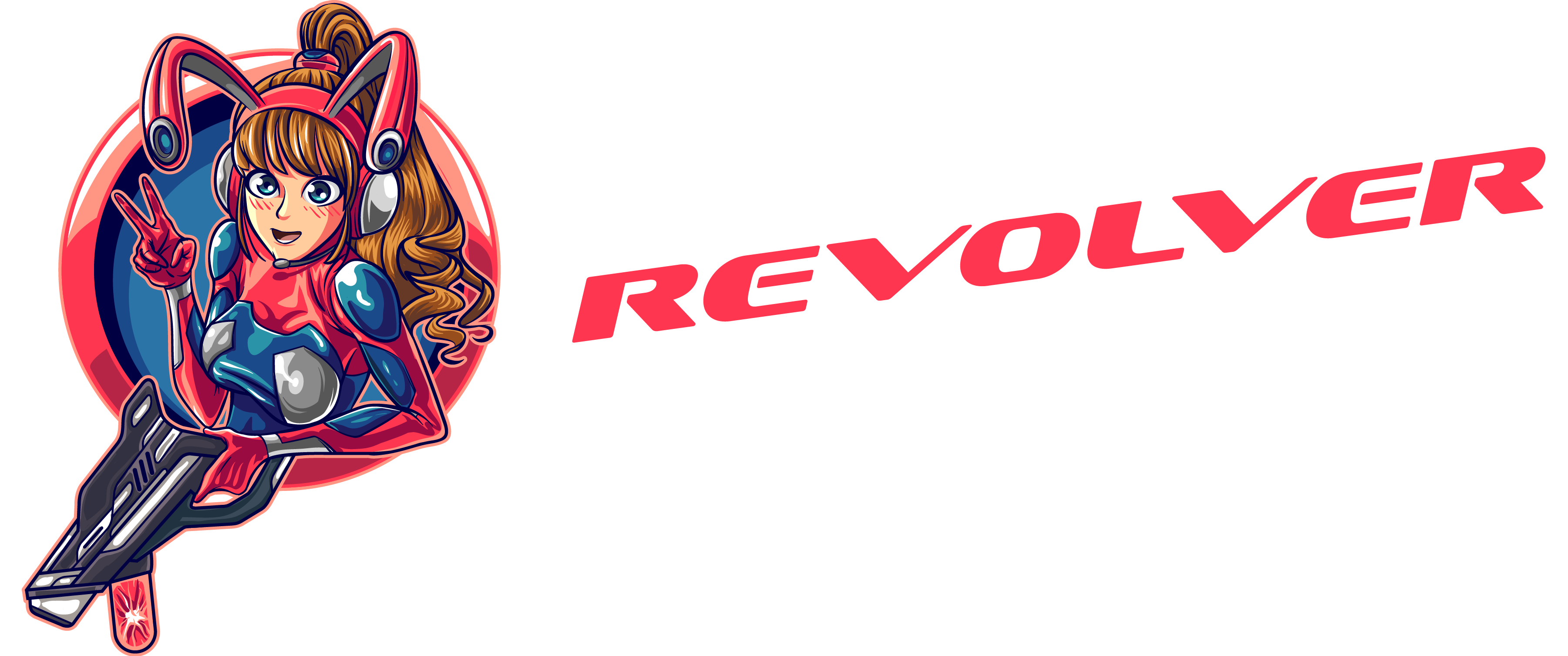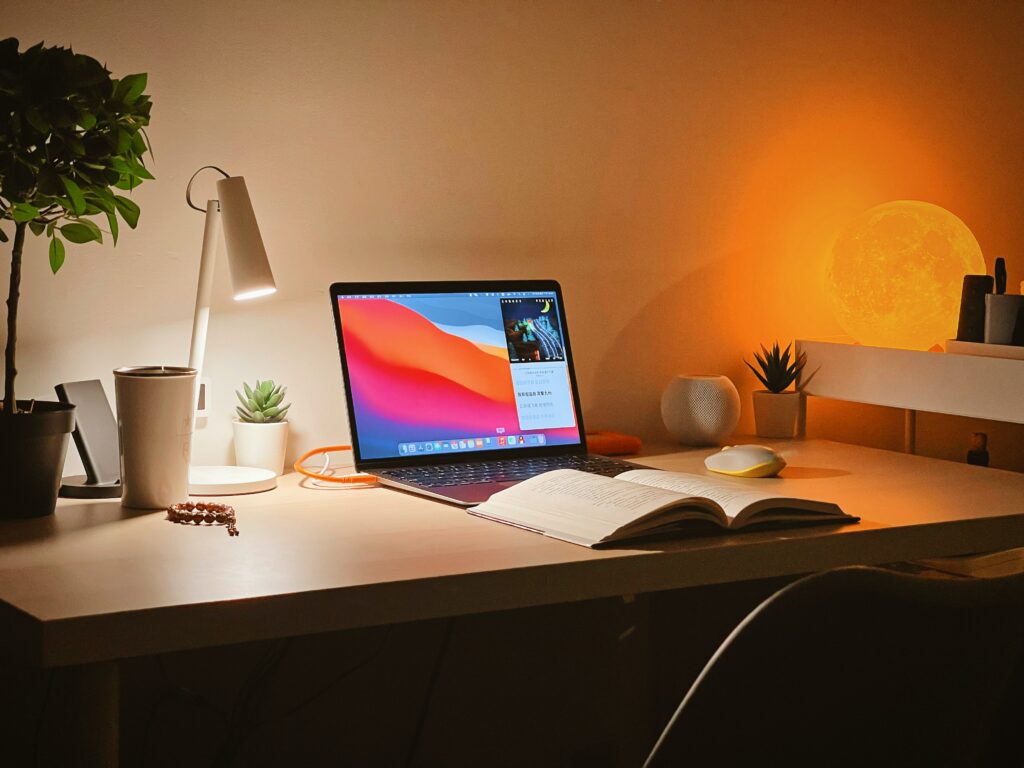
Keyboard
The Apple MacBook Pro has a great keyboard which offers a very comfortable typing experience. The keys are well-spaced and the tactile feedback is excellent. There is also a backlight that can be adjusted for brightness and is a great addition for low-light environments. The low profile and low travel of the keys also provide a quick and accurate typing experience.
Design and Layout
The award-winning design of the MacBook Pro features an edge-to-edge display that packs more pixels into the same space. It also has an iconic thin and light wedge shape that Apple pioneered with the original MacBook Air. But what really sets it apart is its intuitive layout and fluid gesture control.
The full-size backlit keyboard is intentionally spaced to fit your fingers without crowding them, allowing for more precision and a comfortable typing experience. Meanwhile, the multi touch trackpad gives you much more than a cursor – pressure sensors detect how hard you press and secondary functions such as swipe to delete or three finger drag. The elegant design features a Taptic Engine to provide haptic feedback when you click, so you feel confident that every click has registered correctly.
And if dual displays are more your thing, there are options like the DualDrive² system which lets you use two displays with one machine – one on either side! This allows you to increase productivity by organizing multiple applications onto multiple monitors at once.
Find out why users have been loving Apple’s keyboards for over two decades – see for yourself why MacBook Pro is clutch for creative professionals everywhere!
Responsiveness
The keyboard and trackpad of the MacBook Pro are designed for precision, responsiveness and maximum comfort. Every key is individually backlit for easy typing in low-light conditions, with dynamic lighting that automatically adjusts to your environment so you can type with greater accuracy.
The trackpad of the MacBook Pro is incredibly responsive, giving you a smooth, fast experience as you switch between apps or multitask. Its Force Touch technology enables pressure sensitivity for precise control over your actions – including pressure-based cursor speed. The Force Touch–enabled trackpad also supports haptic feedback to give your clicks an even more realistic feel. It’s even sensitive enough to understand how hard or soft you’re pressing, so the deeper the press, the faster or stronger an action will be performed. This makes navigating your Mac faster and more intuitive than ever before.
Quietness
Most keyboards have tactile feedback, allowing users to ‘feel’ when they have pressed a key. Keyboards with sharper tactile feedback may sound louder than those with less tactile feedback. Apple’s MacBook Pro keyboard is an example of a keyboard that offers a good balance between sound and feedback.
Apple engineers developed the MacBook Pro Keyboard with an intricate process to minimize sound output. The design focuses on the introduction of materials that dampen noise, such as thinner butterfly mechanisms, silicone seals and rubber sponges.
In addition, Apple uses scissor mechanisms in their keyboards which offer a quieter typing experience compared to more traditional dome switches. As a result, the MacBook Pro Keyboard is much quieter than similar designs from other manufacturers, creating only 56 decibels during typing levels – roughly equivalent to soft whispers or the rustling of leaves in the wind generated by nearby trees.
The trackpad also features quiet performance elements with its pressure sensors infused into its built-up force design that prevents clicking or dragging noises when using gestures such as scrolling or navigating through menus within applications. Additionally, Apple incorporated Ultra-Low travel distance for faster response times and greater precision when performing tasks like double-clicking or dragging windows on screen; all these features contribute enormously to the eliminating of any unbearably loud noises from your trackpad experience when using an Apple MacBook Pro laptop computer.
Trackpad
The trackpad of the MacBook Pro is essential for navigating the computer. It tracks your finger’s movements so you can move around the cursor and scroll through pages. The MacBook Pro trackpad offers an intuitive and smooth experience, with a wide range of gestures you can use to navigate the computer.
Let’s take a look at some of the features of the MacBook Pro trackpad:
Design and Layout
The trackpad of the MacBook Pro is one of the most intuitive and advanced of any device. It is designed to allow users to have better control over their cursor movement, finger-based gestures for quickly browsing content and a multi-touch surface for user input.
The trackpad is made up of a glass layer on top of an aluminum surface for smooth tracking on the desktop or other flat surfaces. Here, you’ll find integrated buttons and deep press capability which gives you greater accuracy when selecting items or using other functions from within the macOS ecosystem such as Multi-Touch gestures.
The trackpad supports standard features such as tap to click, three finger drag and secondary click (also known as right-click) with two finger tap – these can be turned off in settings if desired. It also has Force Touch technology which gives users a ‘deep press’ sensation when they interact with the trackpad with more pressure than normal – this allows access to additional features like pop up menus, quick look and force touch inside apps.
Additionally, it also enables access to Quick Actions in Finder windows and special functions like haptic feedback that vibrates slightly when interacting with selected items within menus.
The MacBook Pro’s trackpad has become a fan favorite for its accuracy, responsiveness and customizable feel that fits the preferences of most people who use it. It is considered amongst some laptop users as one of the best out there thanks to its top end design and useful features that can optimize your productivity on the go or when using it from home or office environments.
Responsiveness
The keyboard and trackpad of the MacBook Pro give an unparalleled level of control over your computer. The keyboard has a full-sized set of keys with adjustable backlighting and Force Touch technology that creates a more comfortable typing experience while responding to the lightest of touches.
When it comes to the trackpad, its large multi-touch surface is designed for precise scrolling, swiping, pinching and zooming. The MacBook Pro’s trackpad utilizes four force-sensors that can detect even the slightest movement, while its embedded Taptic engine provides tactile feedback. Apple also incorporated haptic feedback into macOS Sierra in order to make navigation fluid and intuitive. The combination of these technologies creates a highly responsive touch experience that many users find to be extremely accurate when interfacing with their Macbook Pro.
You will also enjoy enhanced cursor control and smooth movers when navigating applications with two fingers on the trackpad, which delivers precision and ease-of-use like never before seen on a laptop computer.
Multi-Touch Gestures
Multi-touch Gestures are an essential function of a modern trackpad. As these features become increasingly popular in personal computers, the need for users to know how to interact with the trackpad becomes more important.
Multi-touch gestures are simple actions that are performed with two or more fingers on the trackpad. Basic gestures include pinch, zoom, rotate and swipe. For example, a pinch gesture triggers when two fingers move towards each other on the pad. This action might be used to zoom in and out of images or maps.
A rotate gesture is performed by moving two fingers around each other, which could be used to rotate an object on your screen such as a text field or icon. Lastly, a swipe gesture sees the user move one finger across the pad in one direction or another. Swiping can be used to select text or copy and paste information between documents.
It is important to become familiar with several basic multi-touch gestures; this will enable you to efficiently use your computer as there will no longer be an obstacle in understanding how to interact with important content and programs. Gestures also allow you to have fluid movements across different areas of your laptop’s operating system without having to drag items around awkwardly or use inefficient keystrokes and commands!
Comparison
The MacBook Pro is known for its high-performance laptop and many users prefer Apple’s range of machines. The keyboard and trackpad of the MacBook Pro is one of the standout features of the machine and can be a deciding factor for many users.
In this article, we will compare the keyboard and trackpad of the MacBook Pro to other laptops to explore the differences and pros and cons of each.
Keyboard vs. Trackpad
For a laptop, the user experience can depend largely on the keyboard and trackpad. There’s often a trade-off between laptop size and comfort when it comes to choosing between an external keyboard and trackpad vs. an integrated input device. Luckily, the new MacBook Pro features one of the best keyboards and trackpads for laptops. It’s also one of the thinnest and lightest models available, allowing for easy portability when traveling with your laptop.
The MacBook Pro’s full-size redesigned Magic Keyboard features extended keys that are springy and responsive, with lots of travel that makes typing comfortable. The low-profile design minimizes finger fatigue, making long hours of typing less tiring than on many other keyboards. In terms of ergonomics, the keycaps are raised away from each other to ensure accurate keystrokes regardless of finger orientation or location on the keycap.
The all-new Force Touch TrackPad operates without a physical button; instead you press down slightly to click like you would with a traditional mouse button. The advanced pressure sensing technology responds differently depending on how deep you press down and this differentiates it from traditional touchpad technology in two ways:
- Pressing helps provide tactile feedback that’s absent in regular touchpads; and
- The pressure applied triggers different functions depending on what app(s) are being used at any given time (e.g., pressing more deeply will perform more complex tasks depending if you’re editing text or images).
Overall, whether typing or clicking through pages, users will appreciate how much better both input devices work compared to previous scissor switches found in earlier models; this improved accuracy lends itself to smoother scrolling abilities with minimal lag for an overall more enjoyable user experience when using your laptop.
Pros and Cons
It can be difficult to decide whether the keyboard or trackpad of the MacBook Pro is better for you. To help you make the decision, here is a review of each in terms of their pros and cons:
Pros of Keyboard:
- The keyboard on the MacBook Pro has a standard layout that most people are familiar with. This can make it easier and quicker to type, as your fingers will already know where all the keys are located.
- The keys have a comfortable amount of travel, making it more pleasant to type for extended periods of time.
- The backlit keys are helpful in low-light situations.
Cons of Keyboard:
- Having a physical keyboard adds extra weight to an already heavy laptop, decreasing mobility.
- The keyboard requires regular maintenance such as cleaning, which can be time consuming and tedious.
Pros of Trackpad:
- There’s no need for physical typing on a trackpad, meaning you’re no longer tied down to one spot with your laptop if you need to type something quickly.
- Trackpads have multi-touch capabilities, enabling users to navigate quickly without having to wait for long clicks.
Cons of Trackpad:
- A trackpad is not ideal for long typing sessions as it does not provide tactile feedback like that found with mechanical keyboards.
- Trackpads require regular calibration, which can be tedious and time consuming.
macbook m1 air vs pro
Apple’s latest model of MacBook laptops work with the new M1 processor, which has delivered notable performance improvements over their predecessors. If you are looking to purchase one of these new models, you should consider the differences between the M1 Air vs Pro to help you decide which is right for you.
The M1 Air features 8GB of Ram, while the Pro has 16GB of RAM. Both come with a 13-inch Retina display but the Pro offers improved brightness and quality when compared to its Air counterpart. The storage options also differ – The M1 Air comes in only two variants, 256GB and 512GB whereas the Pro features multiple choices ranging from 256GB to 2TB. When it comes to performance, both are powered by the same M1 chip, but due to its larger memory capacity and faster RAM speed, the Pro has an edge over its Air counterpart.
One major difference between them lies in their ports and connectivity options – The M1 Air has just two USB-C ports, compared to four in the Pro model; it also supports WiFi 6 as opposed to WiFi 5 in the latter. Finally, when it comes to pricing, there is a noticeable disparity between them: The 256GB variant of M1 MacBook Air costs $1000 less than that of MacBook Pro ($1099 vs 2099).
In conclusion, if you need improved performance but don’t mind cutting down on features like port versatility or longer battery life (M1 AIR), then opting for the more affordable option – M1 Macbook air would be ideal in your case. However should these characteristics matter significantly or intense professional work necessitates more storage or RAM capacity then investing a few hundred dollars more into getting a MacBook pro could certainly be worth it!

